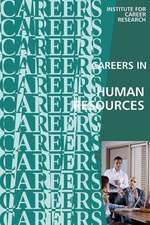Career as a Nurse Anesthetist
Autor Institute for Career Researchen Limba Engleză Paperback
Preț: 62.09 lei
Preț vechi: 65.35 lei
-5% Nou
Puncte Express: 93
Preț estimativ în valută:
11.88€ • 12.44$ • 9.83£
11.88€ • 12.44$ • 9.83£
Carte disponibilă
Livrare economică 15-29 martie
Preluare comenzi: 021 569.72.76
Specificații
ISBN-13: 9781514726242
ISBN-10: 1514726246
Pagini: 42
Dimensiuni: 152 x 229 x 2 mm
Greutate: 0.07 kg
Editura: CREATESPACE
ISBN-10: 1514726246
Pagini: 42
Dimensiuni: 152 x 229 x 2 mm
Greutate: 0.07 kg
Editura: CREATESPACE
























